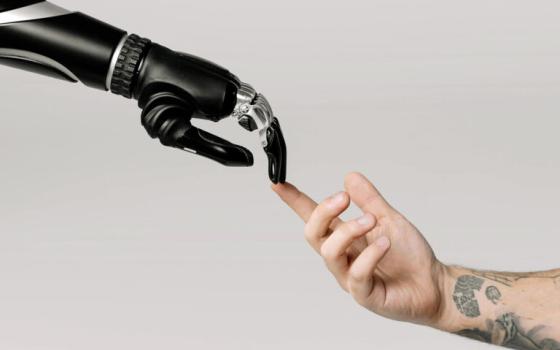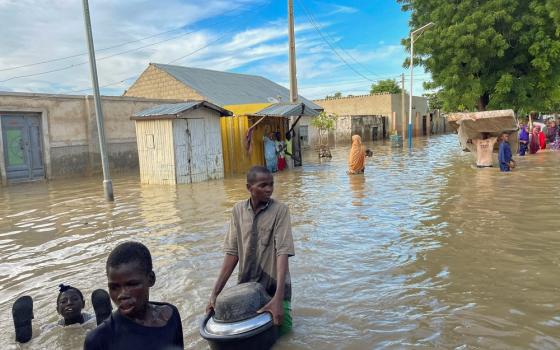A HISTORY OF THE POPES: FROM PETER TO THE PRESENT
By John W. O’Malley, SJ
Published by Sheed & Ward, $26.95
This is the subject that most interests John O’Malley: What is a pope’s job? O’Malley, being a good historian -- he is professor of religion at Georgetown University in Washington -- knows that the only way to answer that important question is to look back across the 2,000 or so years of the bishopric of Rome and ask what popes have done.
What they did for much of the time was to look after Rome and its people, provide dignified religious services, build and maintain splendid basilicas to the glory of God, and take care of widows and orphans. In a later generation they also set about making money for themselves and their relatives, and, in some cases at least, for their children.
The history of the popes, he remarks, is not always pretty. Pretty or not, Catholics ought to learn about it. As C.S. Lewis wrote -- apropos of something else -- “The unhistorical, without knowing it, are usually enslaved to a fairly recent past.” Two hundred and sixty men have been pope, though, as O’Malley points out, the matter is not straightforward. The first problem is whether you include Peter. Yes, says O’Malley. Even though Peter can hardly have been a bishop in the modern sense of the word, he must, O’Malley argues, have played some kind of leadership role when he lived in the Christian community in Rome.
It all becomes even more complicated during the great schism at the end of the 14th century and beginning of the 15th when there were two, and sometimes three, claimants to the papal throne. When Prospero Lambertini was elected in 1740 he thought he was Benedict XIII, but Vatican officials nervously suggested that just possibly the previous Benedict XIII (1394-1417) might after all have been the rightful pope, so he called himself Benedict XIV. When John XXIII took his title in 1958 he said he was not making any judgement about the validity of the election of the other John XXIII (1410-1415), though it is difficult to imagine two such different holders of the church’s highest office. Who was and who wasn’t a pope does not greatly matter because papal authority is not hereditary. It is not handed on from one pope to the next. It comes with being elected to the job.
 Then again, too many Catholics think that the way the pope exercises his authority nowadays is the way it has been exercised from time immemorial. Nothing could be further from the truth, as O’Malley sets out to demonstrate. Earlier popes did not write encyclicals, at least not until the middle of the 18th century. They did not even always appoint bishops, certainly not bishops in faraway places like England for instance, where there were even laws to stop them from trying.
Then again, too many Catholics think that the way the pope exercises his authority nowadays is the way it has been exercised from time immemorial. Nothing could be further from the truth, as O’Malley sets out to demonstrate. Earlier popes did not write encyclicals, at least not until the middle of the 18th century. They did not even always appoint bishops, certainly not bishops in faraway places like England for instance, where there were even laws to stop them from trying.
We are accustomed to popes who travel around the world. In earlier centuries that was not possible. When they traveled to France, say, or Germany, they usually went because they needed the help of the king or of the emperor. They might have been treated respectfully when they arrived -- at least sometimes -- but they went not in triumph but as supplicants. Popes were not always greatly liked (oddly, O’Malley leaves out Benedict XIV, one of the most popular). They were certainly not given the kind of personal loyalty that was shown to Pope Pius IX. That degree of loyalty, says O’Malley rather tartly, was new. He does not add, as he might have done, that it was fostered by a group of socially conservative laymen, mostly aristocrats, for their own ends. It was also not until the 19th century that popes started trying to teach theology to the church at large, a function, says O’Malley, reserved from the Middle Ages to professional theologians teaching in universities. Popes have not always been good at it.
Whenever I read histories of the papacy I am reminded of a famous resolution put before the British Houses of Parliament in 1780: “The power of the crown has increased, is increasing, and ought to be diminished.” That the power of the papacy has grown, at least over the last couple of centuries, and is growing, is gently illustrated by this lively and accessible book. O’Malley is too loyal a Jesuit to draw the conclusion of the 1780 proposition.
There are, as O’Malley rather sportingly points out, more detailed one-volume accounts than his. He cites Eamon Duffy’s Saints and Sinners: A History of the Popes. He is careful to present his own work as an introduction. Much has to be left out. He is an expert on the Renaissance -- the 16th century gets three chapters -- but the 17th and 18th centuries are crowded into one. And there are signs of haste.
I greatly admire Ercole Consalvi, not least because he was a great friend of Cardinal Henry Stuart who, had it not been for Parliament insisting on a Protestant succession, would have been King Henry IX of England. Consalvi was perhaps the best pope the church never had. He was secretary of state to Pope Pius VII (1800-23), but he did not, as the author suggests he did, hold the office throughout the pontificate: At one point he resigned, to be reinstated some years later. Nor did he serve in the same post under Pius’s successor.
Other small errors occur, but for a fair-minded, lively, easy-to-read account of the oldest surviving institution in the Western world, O’Malley’s offering is hard to beat.
Michael Walsh, former librarian at Heythrop College, University of London, has written, edited or translated more than two dozen books, chiefly on the history of the papacy and of saints. He is now writing on the lives of the cardinals, particularly the less exemplary. His revision of The Oxford Dictionary of Popes should be available early in 2010.


